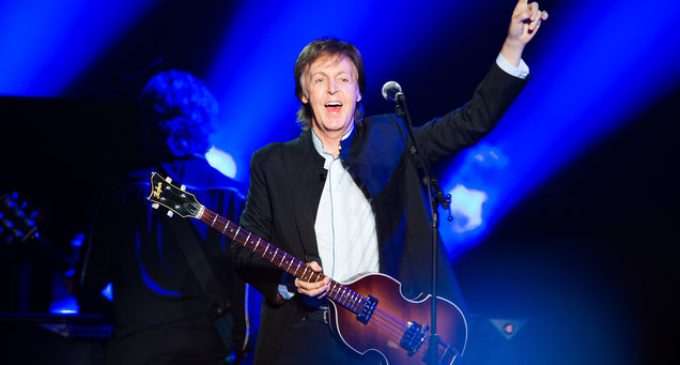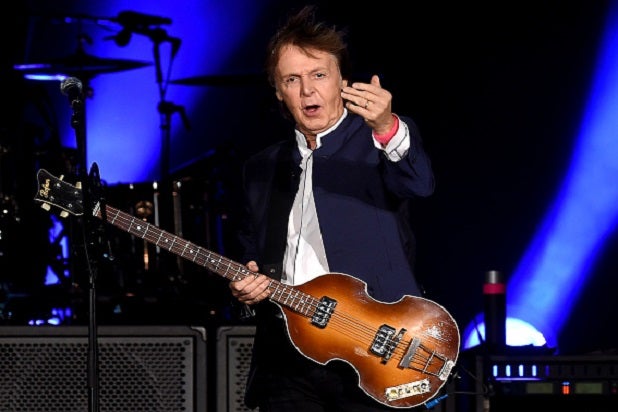Paul McCartney’s 75th Birthday: 4 Things You May Not Know About the Beatle

Paul McCartney’s 75th Birthday: 4 Things You May Not Know About the Beatle
Known as the “cute Beatle,” McCartney’s influence reaches further than you might expect Getty Images
Getty ImagesWhen Paul McCartney wrote “When I’m 64,” he couldn’t have imagined that when he reached that age anyone would still be thinking about The Beatles.
This weekend he turns 75, and McCartney still boasts one of the best live acts around. At his age, he can still push three hours on stage. And years after his prime with The Beatles, McCartney was and is still a consistent hit maker, whether it was collaborating with John Lennon, Wings, Michael Jackson or Kanye West.
Despite McCartney’s enormous legacy, in some circles he’s still viewed as the “cute Beatle.” But his influence on the British rock band was far more significant than his fun-loving, pop star persona let on.
Here are four things you may not have already known about McCartney:
Also Read:Paul McCartney and Ringo Starr Totally Space Out to Celebrate ‘Sgt. Pepper’s’ Anniversary
1. Paul was experimental before John
McCartney was never just a pop star. Today John Lennon has more of the edgy, artistic cred. Lennon is the daring artist who recorded rage-filled scream therapy into an album, posed naked with his wife for an album cover and put together eight full minutes of a tape loop of a man repeating “number nine.” Meanwhile, Paul recorded “Maxwell’s Silver Hammer,” “Mary Had a Little Lamb,” “Silly Love Songs” and now has a cameo in “Pirates of the Caribbean 5.”
In the mid-’60s however, Paul was hugely involved in the underground London art scene. As part of the Indica Gallery, he worked with artists like John Dunbar, Robert Fraser and Andy Warhol. He further attended performances of classical music and screenings of experimental films. It was this dabbling in the counterculture that laid the groundwork for the themes and concept behind “Sgt. Peppers.”
2. Paul may have had more to do with The Beatles breakup than Yoko
Yoko Ono gets a bad rap. Casual Beatle fans think she was wholly responsible for breaking up the band, for distracting Lennon and pulling him away from his tight-knit bond with McCartney. There’s truth to that, but by 1969, the Fab Four couldn’t stand each other, and at the center of all their bickering was Paul. With “Sgt. Peppers,” McCartney started to seize more creative control away from Lennon and the rest of The Beatles. He had taken a much firmer, task master role in the band, trying to control more aspects of their image and sound.
It culminated in uncomfortable recording sessions in which the band spent hours trying to perfect goofy tracks like “Ob-La-Di, Ob-La-Da,” a song Lennon and George Harrison would come to loathe. In The Beatles documentary behind the album “Let it Be,” there’s a scene of a sheepish Ringo Starr playing an early version of “Octopus’s Garden” for Harrison and Lennon. As he plays, they look at him like proud parents… that is until McCartney comes in and all the fun is sucked from the room.
Also Read:Paul McCartney Once Punched Eddie Vedder in the Face (Audio)
3. Paul was never “just the bass player“
Would you believe that Lennon’s “Come Together” almost didn’t “come together” at all were it not for the help of Paul’s bass playing? Lennon’s first demo for “Come Together” had more of a rocking, Chuck Berry vibe until McCartney conceived of the bass groove that serves as the song’s spine. His bass lines on other tracks like “I Saw Her Standing There,” “I Want You (She’s So Heavy)” or the dueling riffs on “And Your Bird Can Sing” set new rules for the role the bass could play in a rock band.
Paul would even take the lead playing drums on “Dear Prudence” in place of Ringo, he contributed piano and mellotron to numerous Lennon tracks, and it was Paul, not George, playing a shredding guitar on Harrison’s “Taxman,” a vicious, roaring lick far different from Harrison’s clean, slide guitar style.
4. Paul is Peter Pan
Glenn Gass is a music professor at Indiana University who teaches a class dedicated to the music of The Beatles. One thing he likes to say in his lectures is that McCartney is Peter Pan. When Lennon was assassinated, fans were denied seeing Lennon mature as a songwriter into old age. His music was personal and introspective, and as he grew into a dad, he stopped singing about girls and shifted toward songs of peace, fatherhood and adoration for his wife and family.
McCartney’s gift was to remain forever young, argues Gass — to be able to write prose and construct narratives rich with characters and personalities within infectious pop music. Only Paul could write “Eleanor Rigby,” “She’s Leaving Home” or “Another Day,” all of them songs that reflect the perspective of ordinary people and their daily lives.
While McCartney has written songs that reflect on his age, his fame or his lost friends and loves, he still to this day can write a cheesy, fun pop song like “Queenie Eye” about playing a game of fetch with his dog. Lennon showed his age in his music and McCartney is forever a boy back on Penny Lane.
McCartney is 75 this week, but he hasn’t aged a day.




There are no comments at the moment, do you want to add one?
Write a comment